Play is a great way for your dog to unwind, and it can be a great social activity you both can enjoy. Playing with your pupper can also help the two of you bond.
This might be a game of fetch, it could be playing tug, or even some games that require a little more mental stimulation, like hide-and-seek or other brain games.
But what happens when play becomes too rough?
Some dogs can be quite mouthy, and arousal levels can rise during a play session.
I once worked with a 1-year old Cane Corso who was very mouthy and jumpy, and he became carried away quite easily. He was still young and hadn’t learned any manners or appropriate play interactions with humans.
Suffice to say, it was incredibly unpleasant to have 200 pounds of mouthy dog trying to roughhouse with me!
Today we’ll explore everything you need to know about dog rough play including when to worry and how to stop it.
Why Does My Dog Play Fight with Me? Do They Like Playing Rough?
When dogs play, they often mimic certain fighting behaviors, such as mouthing, biting, vocalizing, jumping and tackling.
This is true for play with other dogs, but it’s also true when your dog plays with you.
However, there are two main differences between playing and fighting:
- Playing involves meta-signals. Meta-signals are body cues dogs use to tell their play partner that everything that just happened, and everything that is about to happen, is all in fun. These include the play bow (bum in the air and elbows on the floor), turning her bum towards her play partner, bouncy movements, relaxed and open jaw.
- The behaviors that mimic fighting (biting, mouthing, jumping, vocalizing) are inhibited. Dogs won’t use the full force of their jaw, even though they easily could. Sometimes they even give their partner the advantage by self-handicapping. This might be laying on her back or allowing another dog to catch her in a game of chase.
Dogs sometimes play quite rough with each other, and this type of dog play is appropriate and normal. Dogs are social animals, and play is a big part of being social and learning the skills they need in order to interact in an appropriate way.
Play also helps puppies develop into socially appropriate adults, develop motor skills, and ensure proper brain development. Play also serves as a form of exercise, and it is likely quite enjoyable.
It is also important to have human-dog play interaction. This kind of play will help your dog to bond with you and learn what behaviors are appropriate when playing with human friends in general. Also, if you play games with structure, it’ll help your pooch learn some useful cues and life rules.
Dog Aggression vs Rough Play : What’s the Difference?
One of the most common questions I hear from clients is whether a dog is “just playing” or if her behavior is more sinister.
This is particularly common with new puppies, as they are still learning what is appropriate, how to read social cues and how to inhibit their biting and mouthing.
Aggression and play rarely go hand-in-hand.
Aggression is generally due to conflict or is a response to fear or anxiety. However, play can get overly rough as arousal levels increase leading to aggressive responses, which is obviously not ideal. So, you’ll want to be observant and stop or redirect your pooch if you see her exhibiting warning signs that her play is transforming into aggression.
Rough Play Red Flags
Here are some red flags to look for:
- Stress signals. These are subtle signs of stress that dogs use to communicate. Stress can escalate quickly and may lead to an aggressive reaction or bite. Bites very rarely will happen ‘out of the blue’, but owners often miss the early warning signs (see our article on calming signals – aka stress signals – to understand what these warning signs look like). When a dog becomes overwhelmed with fear or stress, or her warnings are ignored, she may then growl, snap, or even bite the perceived threat or aggressor.
- Stiff body. When a dog is playing and relaxed, she will be wiggly throughout her body. But if a dog is uncertain or nervous, her body may become stiff, you may see her hackles come up (a behavior that is technically called piloerection), or they may start to move in slow motion.
- Hard stare. Staring is a direct threat. I rarely look at dogs in the eyes for more than 1-2 seconds without moving my gaze away momentarily. If your dog is giving you or another animal a hard stare, if she crouches and begins to move in a stalking position with her body low, moving slowly and stealthily, it is often a sign of an impending chase and possible bite.
- Growling. Growling can be a normal part of play, but out of context or in the absence of meta-signals, it can be a warning to back off. Growling is generally the last and most obvious warning before a snap or a bite and it’s perfectly acceptable to allow your dog to communicate in this manner. If not, she may bite without any obvious warning at all.
- Guarding toys. Some dogs are anxious about having valued items taken from them. This could be food, beds, or even toys. If your dog is aggressively guarding her toys, playing tug or taking a toy from her could end in a bite and will make her anxiety worse over time. Instead, you may choose games that don’t involve you being close to the item that she is guarding.
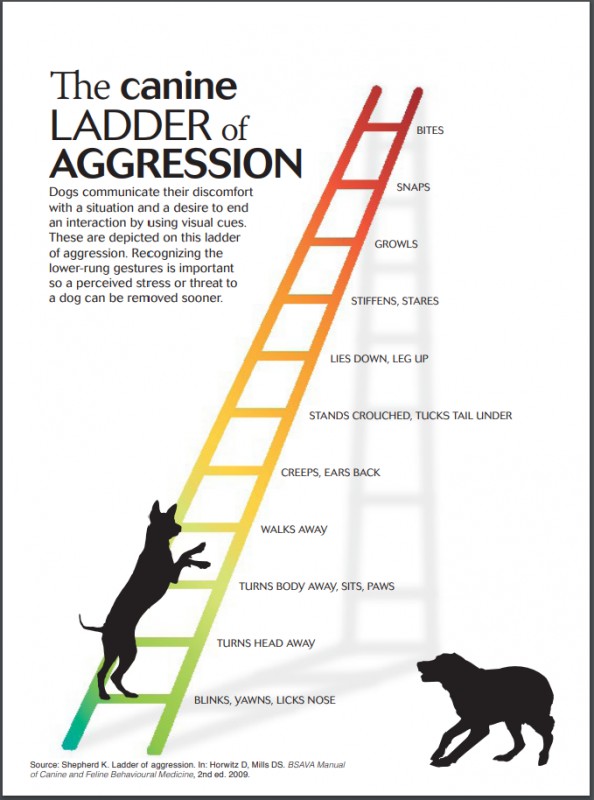
Also, use care to watch for normal play behaviors, such as mouthing, jumping, and biting, which may transform into inappropriate pay very quickly.
My own puppy, a 7 month-old terrier cross named Juno, can easily become way too overstimulated. She has trouble with her impulse control when it comes to nipping and mouthing. She isn’t being aggressive, but it’s still inappropriate.
Is It OK to Play Rough with My Dog?
My answer to these kinds of questions is almost always: It depends!
I suggest avoiding roughhousing with young puppies altogether as it teaches them that biting and mouthing us is OK. If we roughhouse sometimes, she’ll develop the habit of using her mouth when she wants to play. If we never roughhouse and we are always showing her more acceptable ways to interact with us and we will set them up for success.
However, a bit of rough play may be OK for some older dogs.
For example, Juno would love it if I played rough with her, but she would get carried away too quickly. So, we stick to games of tug, fetch, hide-and-seek, and even chase. Really any games that I can retain some control and that do not involve my hands.
On the other hand, my old dog Stewie, a laid-back Pitbull, really enjoyed playing rough. He had excellent bite inhibition and would stop as soon as he was given the cue that we were all done with the game. It just may never be prudent to allow Juno to play in this kind of rough manner.
Set Up Rules & Guidelines for Rough Play
If you are unsure, I suggest erring on the side of caution and playing games that are pretty gentle. It’s also wise to employ rules and guidelines for your dog.
For example, it’s a good idea to teach your dog a strong “drop it” cue for playing fetch or tug. Alternatively, you could teach your pupper some fun tricks like “fetch me a beer.”
These types of interactions are often better options for dogs with high arousal levels. There are some great books and DVDs available for teaching and playing games with your dog.
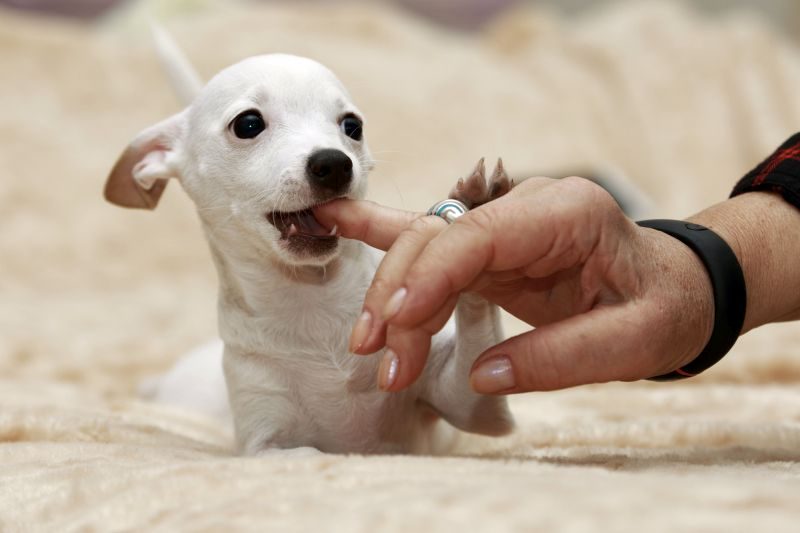
Is Dog Mouthing Acceptable During Play?
The most common reason for mouthing is play, but it’s certainly not something I want any of my dogs to do when interacting with me. How do we know if it is play or something else?
Ask yourself: Is it only happening when your dog is happy and excited or wanting to play? How gentle is she?
Mouthing could be happening for a different reason than play.
For example, perhaps mouthing happens when she is feeling anxious. Or, is she mouthing people when they move around the house (this is especially common among herding breeds).
If she is placing her teeth on you with some pressure, she could be giving you a warning about something that makes her uncomfortable.
You will need to look at the context of the behavior. What is happening before this happens and right after? If she is trying to play while mouthing you, you can make a pretty fair assumption that the behavior is related to rough play.
I prefer my dogs to never mouth me, no matter how gentle they are using their teeth.
Play stops as soon as I feel Juno’s teeth on any part of my body. I then redirect her to something appropriate. After being consistent with this process, Juno now automatically goes and finds a toy as soon as she feels the urge to tug on my fingers.
Does My Dog Bite Me Because She Is Mad?
The answer to this one is a definite nope! There is absolutely no scientific evidence that dogs act out of spite.
Play biting starts because it is a normal instinctive behavior for all puppies. Every single puppy explores their world with their mouths.
That’s when your job comes in. We need to teach our puppies alternatives to biting.
If we give them the attention they are seeking when our puppies bite, we are reinforcing that behavior. For many dogs, this includes negative interaction as well as giving in to play.
It could be as little as making eye contact, saying no, and certainly pushing them or moving them with your hands. You’ll just be adding fuel to the fire.
So, when you start to feel your pupper’s teeth, try to redirect their attention to a toy or something else.
What Is Dog Aggression Biting?
If your dog is not playing when she bites you – for example she is guarding her toys, or she attempts to bite you when you pet her – it still doesn’t mean that she’s mad at you.
Instead, she is telling you that she is scared, stressed, uncomfortable, in pain, or simply doesn’t like what you are doing. You need to respect her “voice” in these situations..
If you have a dog who bites for any of these reasons, it is advisable to contact a professional fear-free based behavior consultant or trainer to help you to deal with the root cause of this behavior.
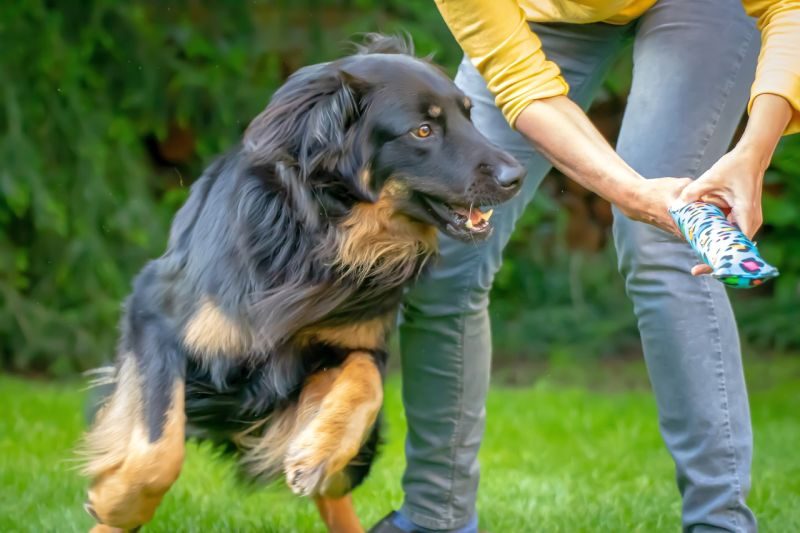
What Should I Do If My Dog Plays Too Rough?
Ideally, you should always start teaching your dog appropriate manners while she is young. This isn’t always possible as some dogs come to us when they are older, and their rough play style has been encouraged or rewarded for a lengthier period.
The more something (mouthing, biting, rough play) is practiced, the better she will be at it. It also means it may take a little longer to change her behavior than a puppy.
Another common mistake is inadvertently (or intentionally) rewarding rough play. Rough play can be pretty cute when your floof is small, but it won’t be so cute once she’s grown up and stronger.
It can be tricky to know how to stop a dog from nipping when she’s excited — it is much easier to prevent the unwanted behavior from happening in the first place than trying to change learned behaviors later on when they become a problem.
However, there are a few strategies you can implement to address inappropriately rough play:
What should you do when your dog plays too roughly?
- Stop. Stop interacting with your dog when she is trying to jump on you, bite or mouth you. This might be physically turning away, crossing arms, and not saying anything. You want to be as utterly boring as possible. It might mean removing yourself from the room or blocking yourself off from your puppy using gates or pens.
- Prevent. If you are playing with your puppy and you can see her arousal levels begin to escalate, remove yourself or give her something else to do before she gets too carried away. Don’t let her reach the point of having to ‘correct’ something we don’t want. If she is expected to keep herself entertained, she needs something to do. Have some puzzle toys, stuffed Kongs, interactive toys and chew items on hand.
- Redirect. This could be redirecting her attention to a toy, a chew item, or other appropriate item she is allowed to play with and chew. This is ideal for those situations where you missed your prevention window, or she is too riled up for you to ignore her completely.
- Alternatives. Give your doggo an alternative behavior to do instead of biting and mouthing. When Juno starts to get too excited and wanting to play with me, I have her settle on her mat. She gets rewarded for this behavior with her favorite treats. Not only can she not jump all over me when she is lying down, but she is earning treats and learning to be calm when she feels overwhelmingly excited. The bonus is, she now defaults to this behavior when she feels excited and she begins to calm herself down automatically.
- Be consistent. Make sure that you always follow a predictable outcome. If biting starts, play stops immediately.
What should you avoid doing if your dog plays too roughly?
This one is pretty easy: Don’t punish your pooch when she plays too roughly.
Often when I say this to a client, they immediately tell me that they would never use punishment.
But when I watch their interactions with their dog, they often revert to things like:
- Yelling
- Kneeing
- Pinning their dog down when she is too rowdy
- Pushing or smacking her on the nose when she is mouthy
It’s human nature! It is important to train yourself to react appropriately too.
Technically, punishment is anything that your puppers finds unpleasant enough to stop an unwanted behavior. For some dogs, this is as simple as raising your voice.
At best, punishment riles your pup up even more and doesn’t do anything to change the behavior. She’ll likely continue to mouth, bite, and play rough.
Generally, when this happens, people begin to increase the intensity of the punishment provided. This may mean raising their voice or pinning the dog down for longer periods of time, or tapping the pup on the nose with a little more force than before.
I think you see where I am going with this.
At worse, punishment can actually cause emotional damage. This may cause your dog to become frightened of you, and it may weaken your bond too.
No one wants this to happen. And ultimately, the behavior may still happen because she hasn’t learned anything other than that you are scary.
Playing Rough with Your Dog: How Rough Is Too Rough?
What is too rough for some dogs may not be too rough for others.
A good rule of thumb: if you are not able to tell your dog when play is done and have her regulate her behavior, and if she doesn’t have a strong cue to drop an item, it’s best not to roughhouse.
Dogs have different play styles, so find a game that works best for your dog.
Knowing how rough is too rough may depend on the size and exuberance of your individual dog. It may also depend on your lifestyle. If you have children, you may want to be considerate of how your pup may try to play with your kids and what would be too rough for little humans.
If biting becomes relentless, excessive, or painful, if mouthing happens in order to solicit your attention, if you are not able to stop the play at any point, then it is advisable to avoid any rough play. Instead, try to follow some of the tips suggested above.
It is important to teach your dog when play is OK, and when it’s too rough. To do this:
- Stop play completely if it becomes too rough.
- Avoid playing rough with your pooch in the first place if you know she tends to get carried away.
- Teach some reliable play rules: “drop it” and “all done” are great options. Make these cues a whole lot more exciting than the play itself. For some dogs, like Juno, this is easy. She is highly food motivated. So as soon as she hears either of those two cues, she immediately complies because she knows I will pay her with cheese or dehydrated liver treats.
- Try some other types of training games with your dog instead!
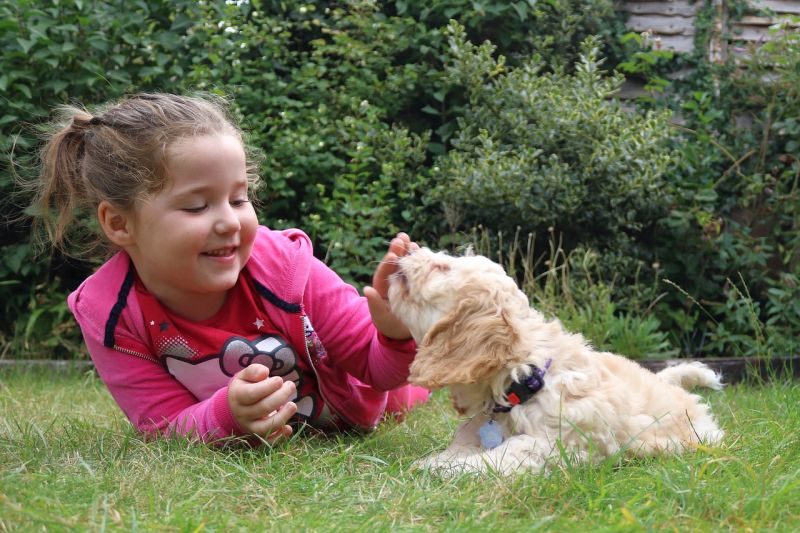
Children Require Extra Caution: Is My Child too Rough with our Dog?
Children are much more likely than adults to be bitten by a dog.
A recent study showed that children under the age of 5 were most susceptible to bites, and the majority of these bites are inflicted by familiar dogs.
Children are not as good at reading the body language of dogs as adults, which can lead to dangerous interactions and unheeded warnings. Children often play too rough with pets, and they can annoy, irritate, startle, or injure dogs.
Accordingly, no child should ever be left unsupervised with a dog, no matter how tolerant and well-behaved the doggo is.
Statistically, the majority of dog bites to children occur to their face, and the results can be quite damaging. The younger the child, the more likely they will require hospitalization.
We’ll discuss some other common concerns of dog-and-child play below:
What do you do if your puppy plays too rough with a toddler?
I have worked with a lot of clients who have decided to get a new puppy when their children are young. But while common, this is not something to undertake lightly.
Puppies are notoriously rough when they play. Their teeth and nails are sharp, and it can be quite upsetting for young children. Children are also likely to cry, scream, and run when this happens, which can inadvertently frighten your pooch, or reinforce her desire to play roughly. .
So, it is always important to supervise puppies and children. In fact, instead of having your toddler play with your puppy, you should try to teach your puppy to earn rewards when your child is nearby by.
This may involve teaching her to chill out on her mat or in a pen when your toddler approaches.
It is also helpful to teach your children strategies that’ll help prevent nips and injuries, such as “be a tree.”
What if my children are too rough with the dog?
Children love to climb, pull fur and tails, poke and prod. This can be really unsettling for your dog, and it may cause her to react in a less-than-desirable way.
So, be sure to teach your children how to appropriately interact with your dog. You may need to prevent them from interacting with the family pet until they’ve learned to do so.
Fortunately, most kids will learn the dos and don’ts of dog interaction pretty quickly. There’s a great card game from Good Dog in a Box called the “Dog Smart Card Game” designed to teach kids how to recognize canine warning signals in order to prevent bites.
How do you stop a puppy from biting a child’s face?
Unfortunately, puppies often bite at the faces of children during play.
Children are small and low to the ground, and their faces make fun noises, so it is easy to see why puppy teeth often seem magnetically attracted to your kids’ faces.
If your puppy is guilty of face-nipping behavior, try to teach her an alternative appropriate behavior. For example, teaching her to sit, lie down, or go to her bed are excellent alternatives to rough play behavior.
Otherwise, prevent the rough play interaction by using pens for either your puppy or for your child (or both).
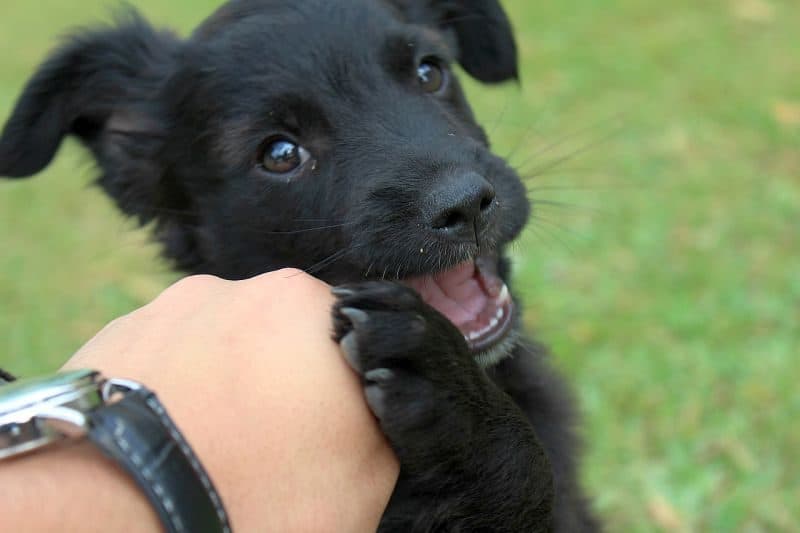
What About Puppies? Is Rough Play Different for Young Dogs?
Puppies are new at this play thing, and biting is a huge part of puppy play. So, it usually takes them a while to learn how to behave appropriately.
The age and rate that dogs learn to inhibit their bite is largely based on their individual personality, how motivated they are to play, and how consistent you are with your training.
As puppies learn what is acceptable, you may be able to integrate more rough and tumble types of play. In fact, you may notice that your dog’s play style may change as she learns and matures.
Some dogs become more or less vocal as they age. Some cautious puppies become more confident with time. Some confident puppies learn better manners. But in all cases, they will (hopefully) begin using their mouth less and showing greater impulse control.
What Do I Do if My Puppy Keeps Lunging at My Face?
Puppies love faces. They love to bite beards and noses. It might be cute when they are 5 lbs and have that wonderful puppy breath. But as they get bigger, this will no longer be fun. Stand up, turn away, and redirect.
What Are Some of the Early Signs of Aggression in Puppies?
Puppies nip and mouth — it’s just what they do. They may also vocalize while playing. This is all completely normal.
But take note of any of the following red flags:
- Growling and baring teeth when you are not playing
- Lack of meta-signals
- Stiff body posture
- Freezing when you come near them
- Guarding their toys or food
- Mouthing or holding your hands or fingers
We have a full article on how to recognize signs of puppy aggression, so be sure to read up if you’re concerned that your young pup might have some aggressive tendencies.
How Can You Stop Excessive Biting in Puppies?
The more a behavior is reinforced the more your dog will do that behavior in the future. In fact, they will get faster, better, and stronger at the behavior too.
So, if your puppy’s biting is becoming excessive, ask yourself:
- What causes the biting? What precedes it?
- What happens when she bites you? What is your reaction?
- What are you doing to prevent it?
- What would you rather her to? How will you work to achieve the desired outcome?
How Can You Correct Aggressive Puppy Biting?
If your puppy is biting outside of a playtime scenario, it is important to understand the root cause of her aggression. And for most owners — particularly first-time owners — the best way to do so is by soliciting the services of a professional canine behavior consultant.
A dog behavior consultant can not only help you figure out why this is happening, but they can also create a specific behavior modification plan to help her. Just be sure to avoid punishing her in the meantime, as this will likely exacerbate the problem.
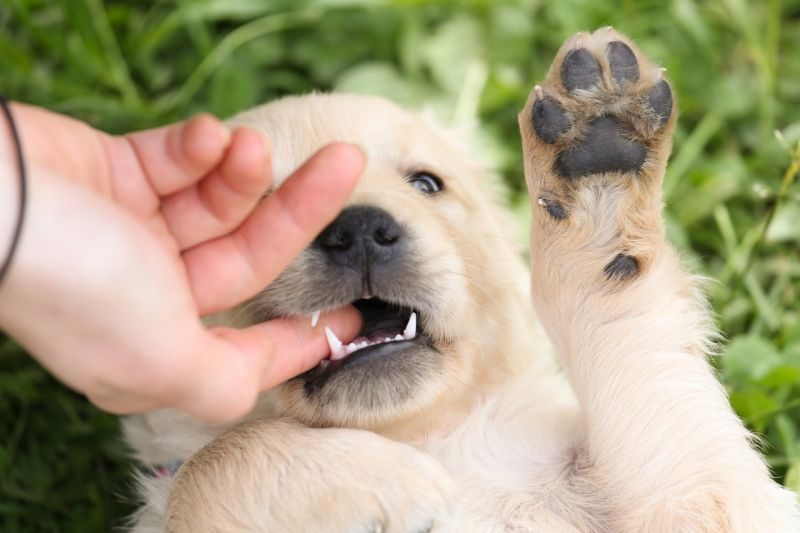
Are Some Breeds More Likely to Be Rough than Others?
Dogs are individuals. Even puppies within the same litter may have a variety of personalities and play styles. But there are some breed traits that may predispose your puppy to either a rough or more gentle style of play.
For example:
- Labradors, goldens, and other types of retrievers are usually high energy pups that are very wiggly. They can easily get carried away when playing.
- Though usually very gentle, pitbull-type dogs are strong, and they tend to use their paws a lot when playing. They can easily topple adults (like yours truly!) over with their enthusiasm.
- Shih Tzus and Bichon Frises are generally much gentler and may prefer cuddles or brain games over rough and tumble. So, they rarely become terribly rough when playing.
- Herding breeds can have high energy levels, but when they have appropriate direction and mental stimulation, are usually not super rough players. They can be mouthy, however.
- Terriers and Spaniels are high energy breeds, who tend to be jumpy and excitable. They also have a strong prey drive, so games of chase or fetch can cause them to become over-aroused.
***
Playing with your dog can be rewarding and fun for both of you. It can help you build a strong bond with your dog, and it teaches them some important skills. However, rough play can easily escalate, so it’s wise to set rules.
What are your favorite ways to play rough with your pup? Let us know in the comments below.
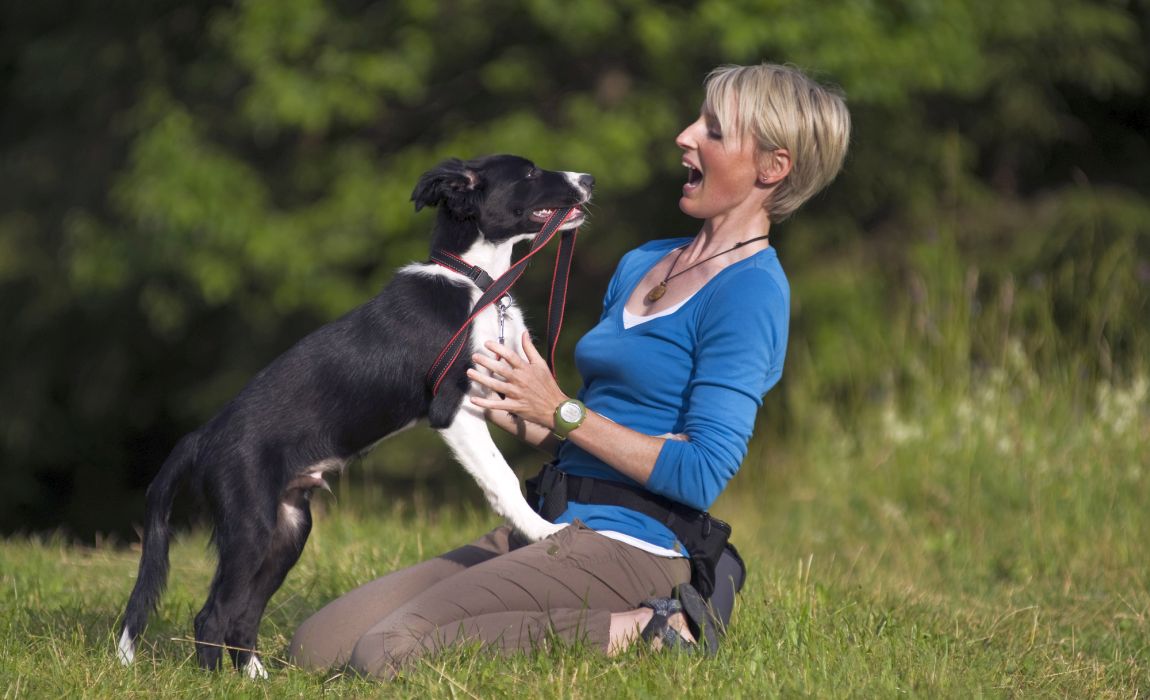

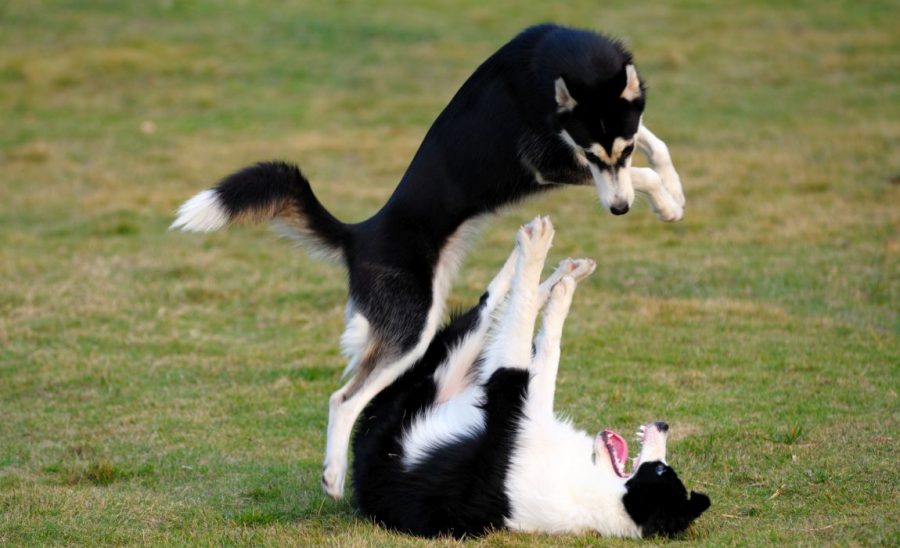


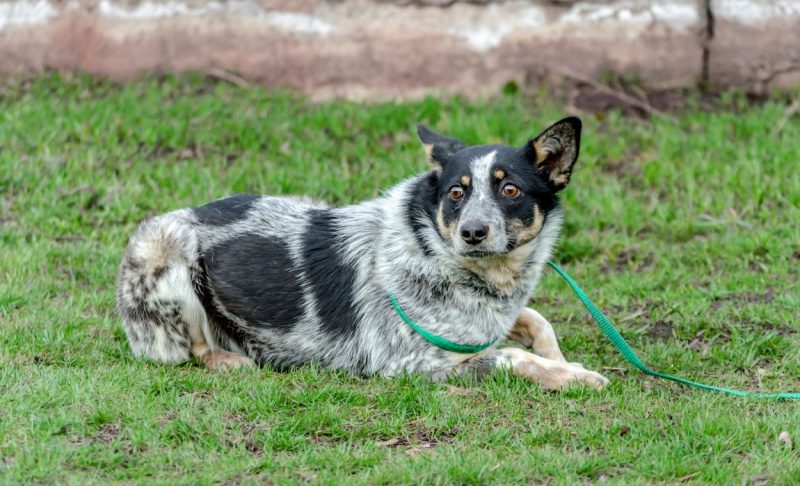
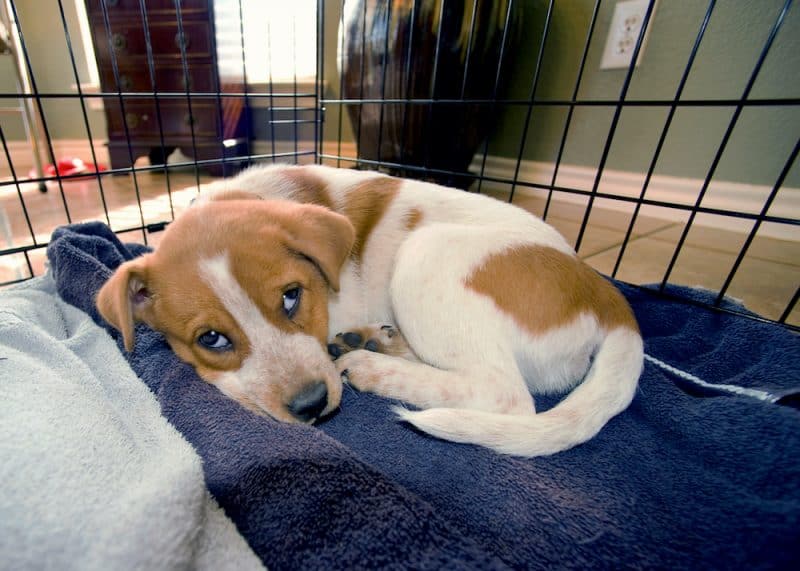
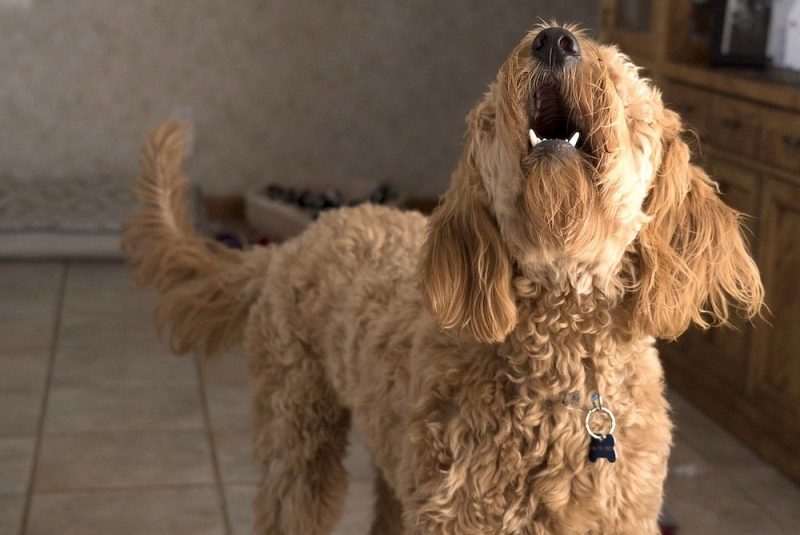
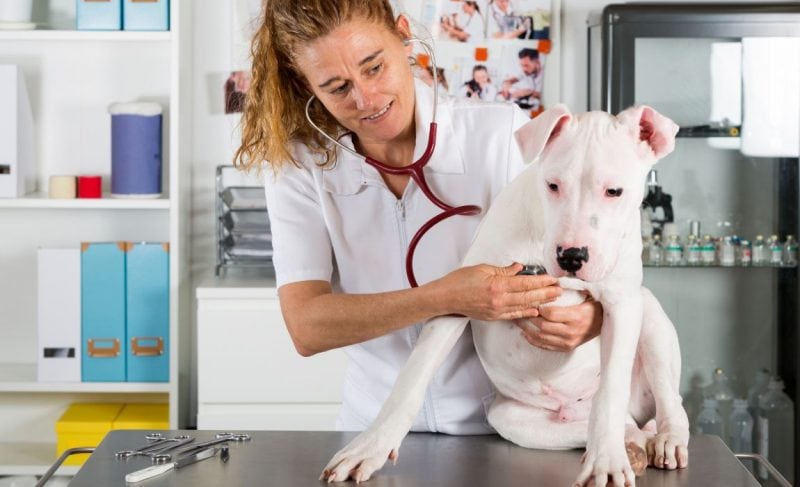

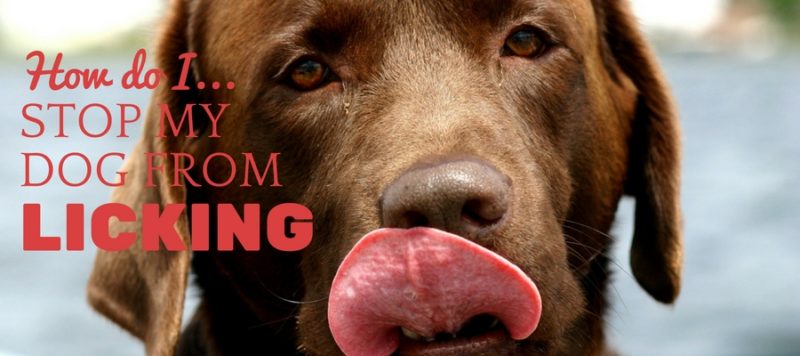
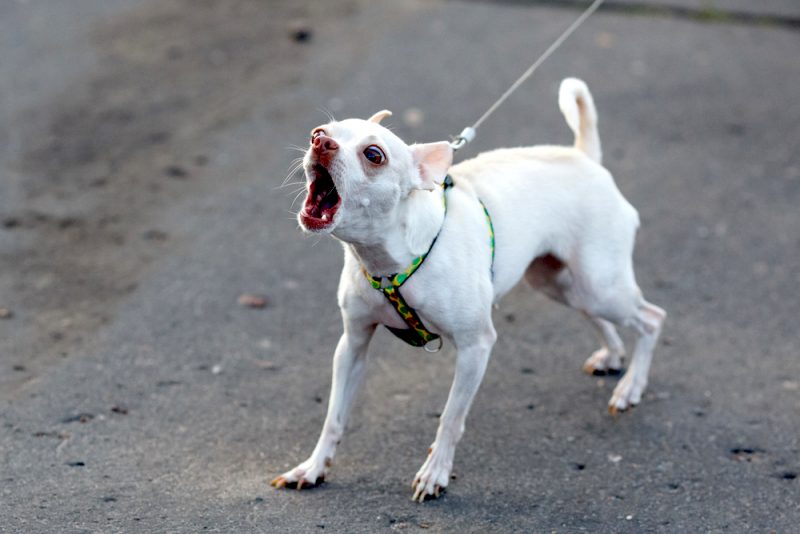

Leave a Comment